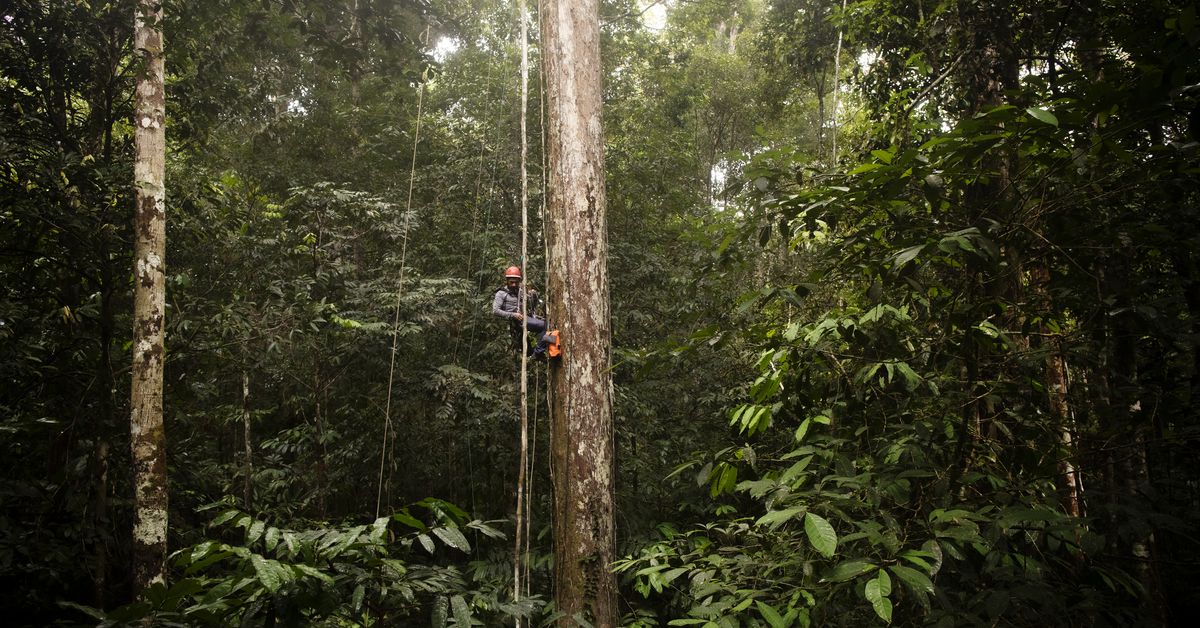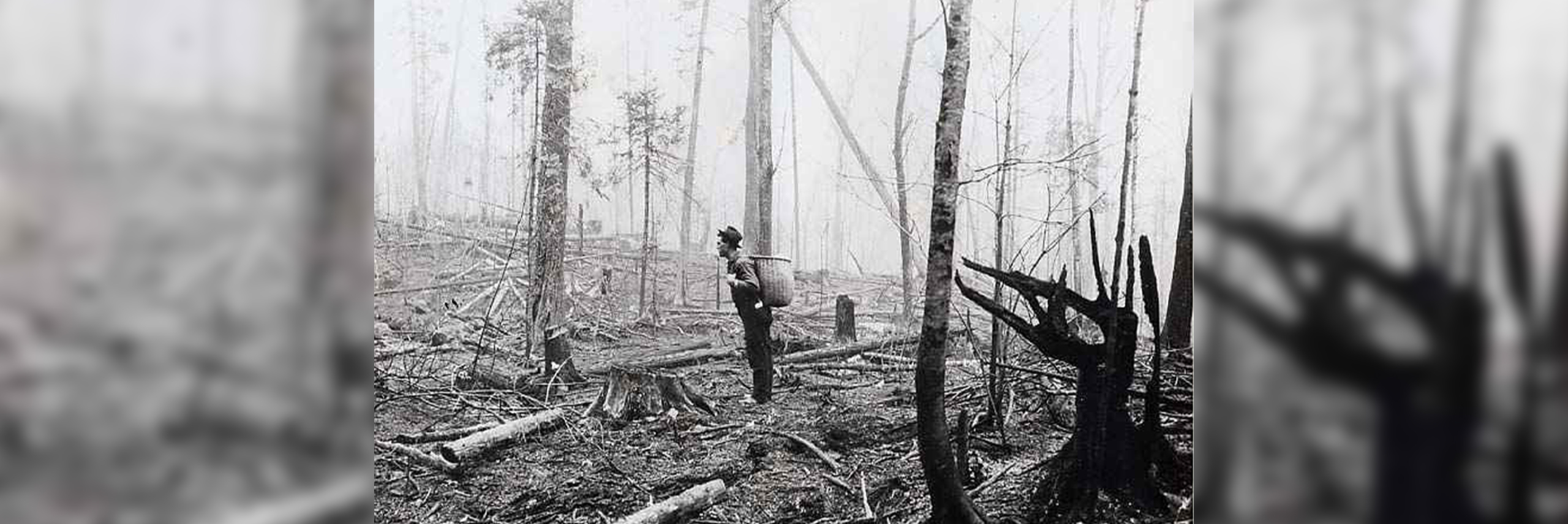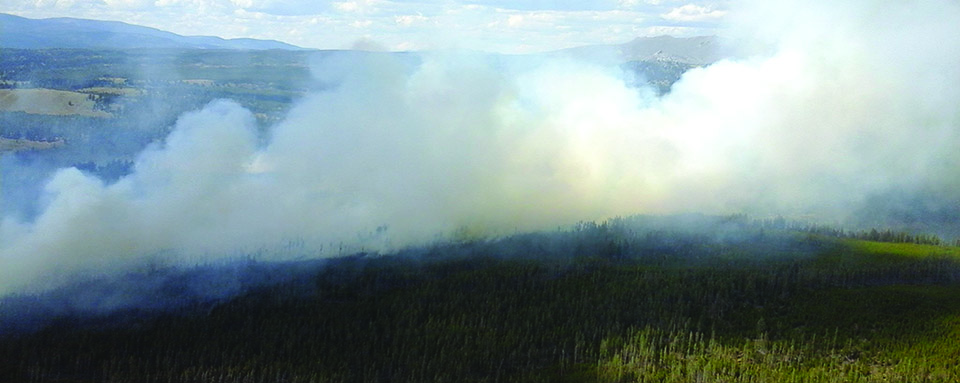That is a truly horrifying situation. Australia is overwhelmed by fire. Temps are in the 100s and the fire line has pushed people to the edge of the ocean for survival. Roads are impassible, so there is no way out. Tourists and homeowners are trapped in one town, on the beach, waiting for this nightmare to end.
Have we reached a tipping point?
- Thread starter begreen
- Start date
-
Active since 1995, Hearth.com is THE place on the internet for free information and advice about wood stoves, pellet stoves and other energy saving equipment.
We strive to provide opinions, articles, discussions and history related to Hearth Products and in a more general sense, energy issues.
We promote the EFFICIENT, RESPONSIBLE, CLEAN and SAFE use of all fuels, whether renewable or fossil.
You are using an out of date browser. It may not display this or other websites correctly.
You should upgrade or use an alternative browser.
You should upgrade or use an alternative browser.
Vox.com has a pretty good article on 3 different tree species that help fight global warming. They help maintain ecosystems, trap large amounts of carbon, and create rain. At a minimum governments around the world should be organizing to protect these forests. But we won't. Because of the usual reasons. So things will get worse.


Looks like most of their firefighters are volunteers, which is astounding. Extended drought and extended, extraordinarily high temps seem to be the issue. Not sure about fire suppression, but add eucalyptus forests with exceptionally high oil content. We won't know until this is over but so far it is estimated that the fires have killed 480 million animals, including roughly a third of the koalas in New South Wales. Temps of 111º are expected this week.
SpaceBus
Minister of Fire
This is one of the most upsetting parts for me.Vox.com has a pretty good article on 3 different tree species that help fight global warming. They help maintain ecosystems, trap large amounts of carbon, and create rain. At a minimum governments around the world should be organizing to protect these forests. But we won't. Because of the usual reasons. So things will get worse.

SpaceBus
Minister of Fire
I was just reading about this a few weeks ago. They even changed the Smokey Bear slogan! Now it goes "Only you can prevent Wildfires"I wonder how much and how long natural bush fires in Australia have been suppressed. And like parts of the US that historically have burned, how policies will now change.
Happening here too. Oregon forests are getting clearcut quickly.This is one of the most upsetting parts for me.
SpaceBus
Minister of Fire
That's horrible. The locals tell me that Maine has very environmentally friendly logging practices/laws, but it's hard to tell when I see trucks full of logs all the time.Happening here too. Oregon forests are getting clearcut quickly.
View attachment 254504
Noticed clear cut gif in Oregon . Relative is at OSU, director OSU research forest. For those so inclined many answers to what is going on in fire mgmt is probably found in one of his many co-authored publications. Most of what I have looked at stress fuel mgmt, and two major causes( human and lightening). (broken link removed to https://catalog.extension.oregonstate.edu/author/stephen-fitzgerald)
Last edited:
I visited the uni at Eugene when I gave a job talk in 1999, and again to give a talk in 2018.
In 1999, the campus felt like a summer camp in the woods, evergreen trees everywhere. In 2018, it looked and felt like Austin, TX. Strip malls everywhere and nary a tree.
In 1999, the campus felt like a summer camp in the woods, evergreen trees everywhere. In 2018, it looked and felt like Austin, TX. Strip malls everywhere and nary a tree.

I was always taught the pond( small ponds even lakes fill in with age), wet lands, swamp, young forest, forest,ect. Been goin on for ever, no?When I was mapping wetlands we mapped a lot of prior farmland that had reverted to forest.
You bet!
My main job was looking at aerial photography and the vegetation, topography, etc. 2 weeks a year of waterlogged soil is enough to change the plants that'll grow there.
Many family farms are reverting back to forest now that they are no longer being worked... plowed land, then grasses and shrubs, then you go into trees and their succession between species. If you know what you're looking for you can see it all from aerial photography. 100+ years ago the land was cleared. Now it's going back to nature.
Given time, nature will reclaim everything.
My main job was looking at aerial photography and the vegetation, topography, etc. 2 weeks a year of waterlogged soil is enough to change the plants that'll grow there.
Many family farms are reverting back to forest now that they are no longer being worked... plowed land, then grasses and shrubs, then you go into trees and their succession between species. If you know what you're looking for you can see it all from aerial photography. 100+ years ago the land was cleared. Now it's going back to nature.
Given time, nature will reclaim everything.
SpaceBus
Minister of Fire
Yes, but we have to stop destroying it faster than it can recover.You bet!
My main job was looking at aerial photography and the vegetation, topography, etc. 2 weeks a year of waterlogged soil is enough to change the plants that'll grow there.
Many family farms are reverting back to forest now that they are no longer being worked... plowed land, then grasses and shrubs, then you go into trees and their succession between species. If you know what you're looking for you can see it all from aerial photography. 100+ years ago the land was cleared. Now it's going back to nature.
Given time, nature will reclaim everything.
It will happen eventually, once she has rid herself of the pesky vermin on her skin.Given time, nature will reclaim everything.
But consumption drives the economy!Yes, but we have to stop destroying it faster than it can recover.
@SpaceBus
There's nothing that we can do that'll beat what nature can do.

 www.theadkx.org
www.theadkx.org
And who can forget the Yellowstone fires in 1988?

What do you think happened after the first rain? How many tons of fragile ecosystem nutrients washed away? Look at Yellowstone now. I visited in the late 90s and there was a young forest full of 10 year old trees.
Nature will fix itself given time. Any pollution will be encapsulated and eventually will be pushed down a subduction zone. Species will come and go. I'm not saying we shouldn't do everything we can to make this a better world, but we aren't going to do anything that nature can't fix.
There's nothing that we can do that'll beat what nature can do.

The Adirondacks are Burning: A Brief History of Forest Fires
The Adirondacks have a long history of epic blazes. While there are no recent comparisons with the terrible devastation faced by the west, fire is no
And who can forget the Yellowstone fires in 1988?

What do you think happened after the first rain? How many tons of fragile ecosystem nutrients washed away? Look at Yellowstone now. I visited in the late 90s and there was a young forest full of 10 year old trees.
Nature will fix itself given time. Any pollution will be encapsulated and eventually will be pushed down a subduction zone. Species will come and go. I'm not saying we shouldn't do everything we can to make this a better world, but we aren't going to do anything that nature can't fix.
/Yes, but we have to stop destroying it faster than it can recover.
Where I started with the GIF by the moderator, 2000-16 you see a yr-2?(so fast who knows) brown then green, new brown becomes the new green. No way to tell if those clear cuts are replaced by green growth or green roofs? just an observation. Probably a small or non existent part of the tip pt?
SpaceBus
Minister of Fire
Those fires were most likely caused by humans not letting natural fires take care of dry underbrush followed by humans starting fires that go out of control. Not to mention unseasonably dry weather in some places but huge amounts of rain in others. It's all messed up, but you really can't ignore the clear cutting in NC and elsewhere along with the burning of rain forests elsewhere. NC is really tragic given the burning of the Smokey mountains and the clear cutting on the costal side.@SpaceBus
There's nothing that we can do that'll beat what nature can do.
Underbrush starts growing pretty quickly, but that has nowhere near the carbon-storing capacity of large old trees.No way to tell if those clear cuts are replaced by green growth or green roofs?

Pacific Northwest forests fit trifecta for curbing climate change — if we stop logging them
Study shows trees along the coast and in the Cascade and Olympic mountains have the most potential to sequester carbon.
Last edited:
If the clear cut is harvest not commercial development. the last paragraph from the article, (broken link removed to https://catalog.extension.oregonstate.edu/sites/catalog/files/project/pdf/ec1498.pdf)Underbrush starts growing pretty quickly, but that has nowhere near the carbon-storing capacity of large old trees.

Pacific Northwest forests fit trifecta for curbing climate change — if we stop logging them
Study shows trees along the coast and in the Cascade and Olympic mountains have the most potential to sequester carbon.crosscut.com
Ultimately, it is your legal responsibility to reforest a site following harvest, which is typically financed by income from the timber harvest.
Indeed, many are, but that model doesn't work too well when one views that 40-60 year regrowth time is too long for carbon sequestration and that the damage done to watersheds and the life that they support is irreparable. Also, monocrop replanting lacks the diversity of a healthy forest which invites insect and disease failures.If the clear cut is harvest not commercial development. the last paragraph from the article, (broken link removed to https://catalog.extension.oregonstate.edu/sites/catalog/files/project/pdf/ec1498.pdf)
Ultimately, it is your legal responsibility to reforest a site following harvest, which is typically financed by income from the timber harvest.
I would not think that most foresters look at their crop as a carbon sequestering business !Indeed, many are, but that model doesn't work too well when one views that 40-60 year regrowth time is too long for carbon sequestration and that the damage done to watersheds and the life that they support is irreparable. Also, monocrop replanting lacks the diversity of a healthy forest which invites insect and disease failures.
I will note that Steve's 2008 article is probably light years away from some newly added techniques and practices as he previously ran the OSU "research forests" He does state on selection,"It is possible to plant more than one species in an area. To be successful, become familiar with the ecological requirements (tolerance to frost, high temperatures, light, and moisture) of the different species and their growth habits. Investigate very carefully before planting non-native (also called “exotic”) tree species. Consult a local forester for specific information on selecting species suitable for your area. " In general I would think the folks at OSU both teach future foresters and use extension service to re-educate those already in the field about those new techniques.
So if the damage is as common as you seem know it is, shame on those foresters and state officals ignoring bad practice. I prefer to think the business is more in line with what is taught at OSU and probably every other well thought of university Forestry dept.
SpaceBus
Minister of Fire
Why would you think that logging companies would use expensive logging practices without oversight? There is illegal logging happening every day. Europe and Latin America are suffering due to tree poaching.I would not think that most foresters look at their crop as a carbon sequestering business !
I will note that Steve's 2008 article is probably light years away from some newly added techniques and practices as he previously ran the OSU "research forests" He does state on selection,"It is possible to plant more than one species in an area. To be successful, become familiar with the ecological requirements (tolerance to frost, high temperatures, light, and moisture) of the different species and their growth habits. Investigate very carefully before planting non-native (also called “exotic”) tree species. Consult a local forester for specific information on selecting species suitable for your area. " In general I would think the folks at OSU both teach future foresters and use extension service to re-educate those already in the field about those new techniques.
So if the damage is as common as you seem know it is, shame on those foresters and state officals ignoring bad practice. I prefer to think the business is more in line with what is taught at OSU and probably every other well thought of university Forestry dept.
Why would you think that logging companies would use expensive logging practices without oversight?Why would you think that logging companies would use expensive logging practices without oversight? There is illegal logging happening every day. Europe and Latin America are suffering due to tree poaching.
where did I say that?
SpaceBus
Minister of Fire
Why would you think that logging companies would use expensive logging practices without oversight?
where did I say that?
I would not think that most foresters look at their crop as a carbon sequestering business !
I will note that Steve's 2008 article is probably light years away from some newly added techniques and practices as he previously ran the OSU "research forests" He does state on selection,"It is possible to plant more than one species in an area. To be successful, become familiar with the ecological requirements (tolerance to frost, high temperatures, light, and moisture) of the different species and their growth habits. Investigate very carefully before planting non-native (also called “exotic”) tree species. Consult a local forester for specific information on selecting species suitable for your area. " In general I would think the folks at OSU both teach future foresters and use extension service to re-educate those already in the field about those new techniques.
So if the damage is as common as you seem know it is, shame on those foresters and state officals ignoring bad practice. I prefer to think the business is more in line with what is taught at OSU and probably every other well thought of university Forestry dept.
Your second paragraph in the quoted text.
Similar threads
- Replies
- 7
- Views
- 1K
- Replies
- 15
- Views
- 5K
- Replies
- 4
- Views
- 4K
- Locked
- Replies
- 167
- Views
- 27K


